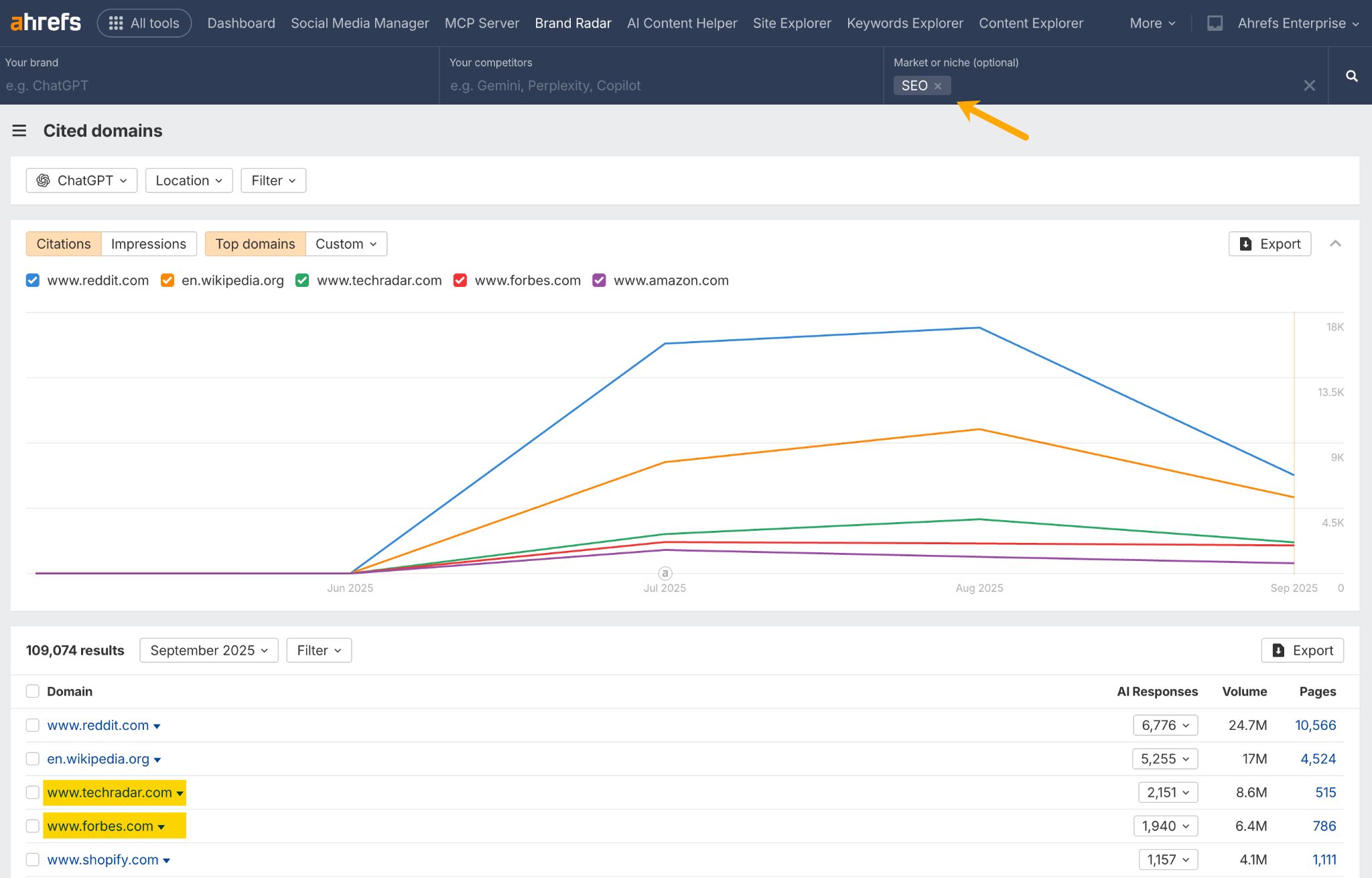You can repeat this analysis yourself pretty easily.
Just do an open database search in Brand Radar, head to the “Cited pages” report for your desired AI assistant, and export the top 1,000 cited pages.
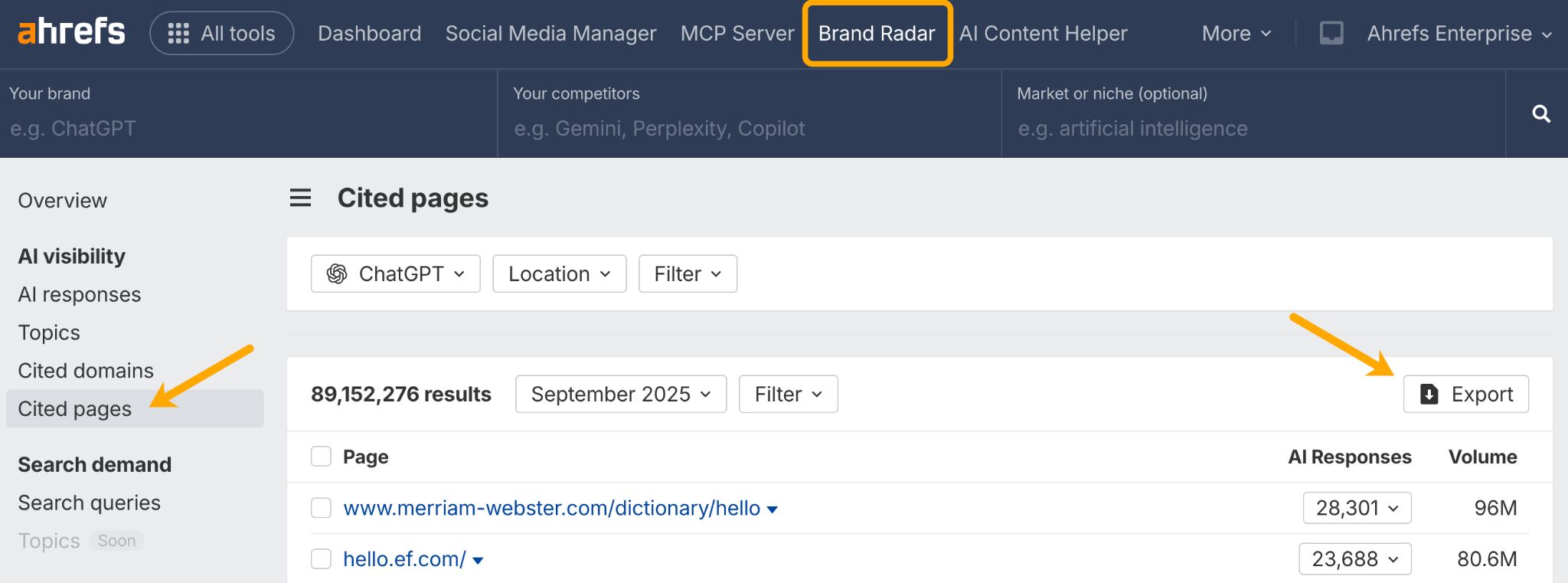
Then run the cited pages through our Batch Analysis tool to grab more organic data on each URL.
You can use Claude to help analyze that data, and even write scripts for Google Colab to fetch and parse content freshness signals for each cited URL.

I did exactly that. Here’s what I found…
ChatGPT’s citations aren’t confined to encyclopedic or editorial pages—but Wikipedia stands out as the single most-cited content type, far ahead of all others.
The rest of the citations are spread across educational content, homepages, app listings, blogs, and other formats.
I used Claude to categorize this data. It may not be 100% fool-proof, but it gives a directional understanding of ChatGPT’s most-cited pages.
Here’s what the top 1,000 cited URLs look like broken down by content type:
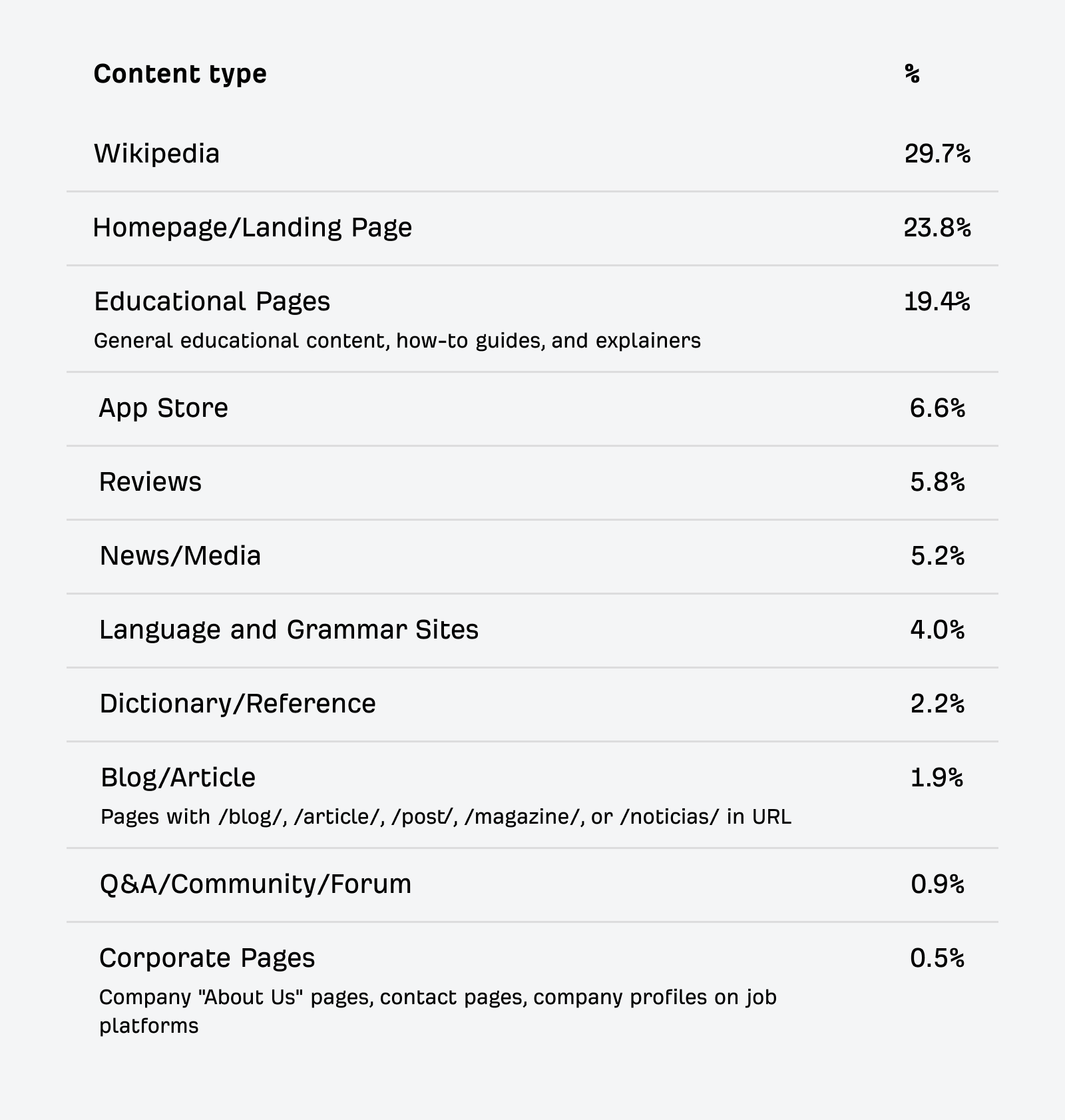
Wikipedia plays a central role in ChatGPT’s citation behavior. The assistant is clearly looking for structured, reference-style sources that summarize topics comprehensively and predictably.
Educational and homepage pages also crop up regularly.
But what’s most interesting is the lack of opportunity to actually get mentioned in these high-visibility citations.
Our Director of Content Marketing, Ryan Law, refers to Wikipedia, homepages, app store pages as “dead” citations, in that you can’t easily influence them.
Going by the above categorization, only 32.3% of the top 1,000 citations in ChatGPT are pitch/outreach-worthy—or at least off-site and influenceable.
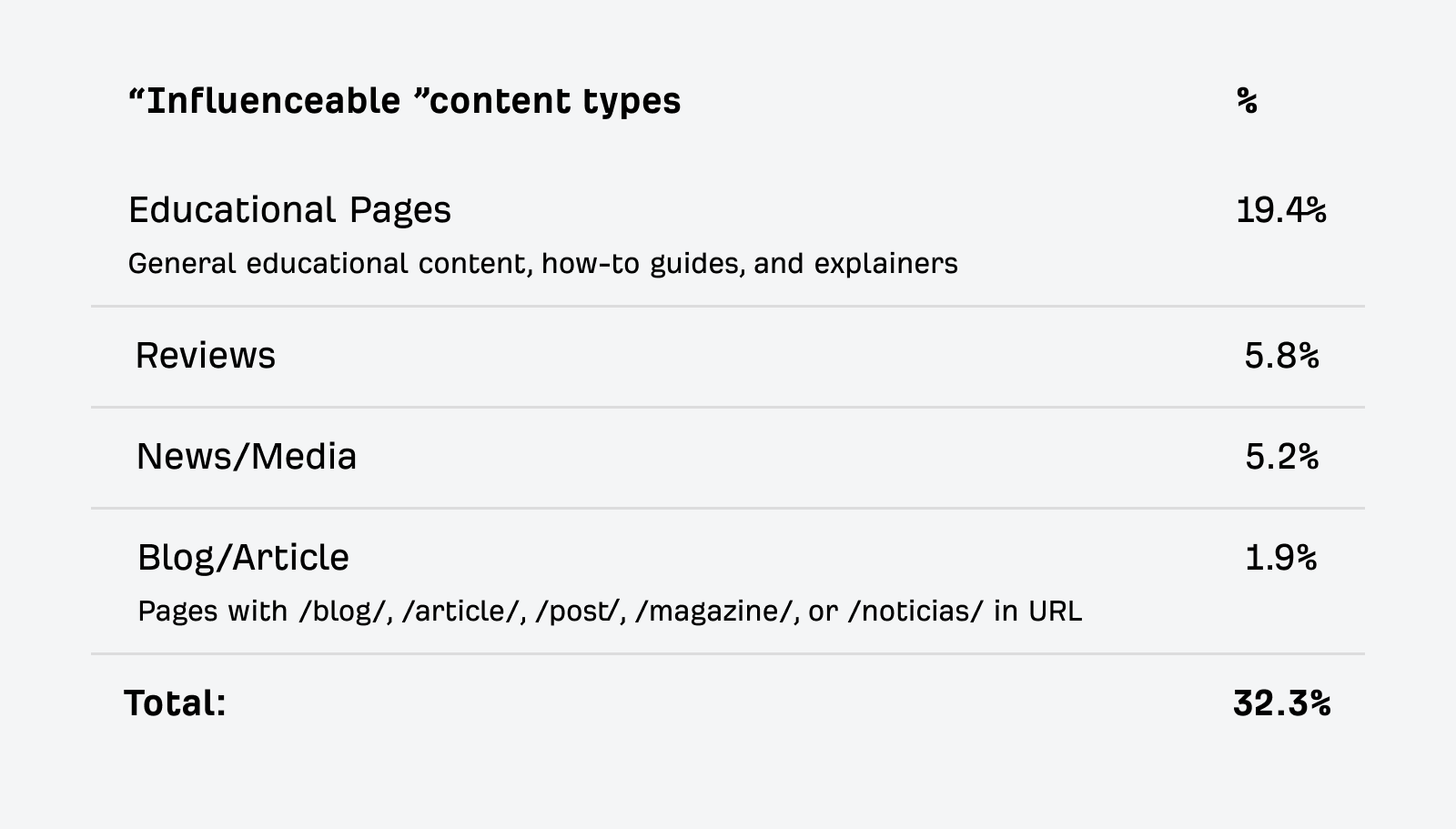
In other words, roughly two-thirds of ChatGPT’s top citations are effectively off-limits to traditional outreach tactics—they’re organizational pages, reference sites, and other “dead” citations you can’t realistically influence.
The pages ChatGPT cites are often newer and less established in search, suggesting recency influences citation visibility, though it’s not the only factor.
Among pages with detectable dates (~40% of the total) the median age was 55 days (just under two months).
Here are the most-cited pages by publication year…
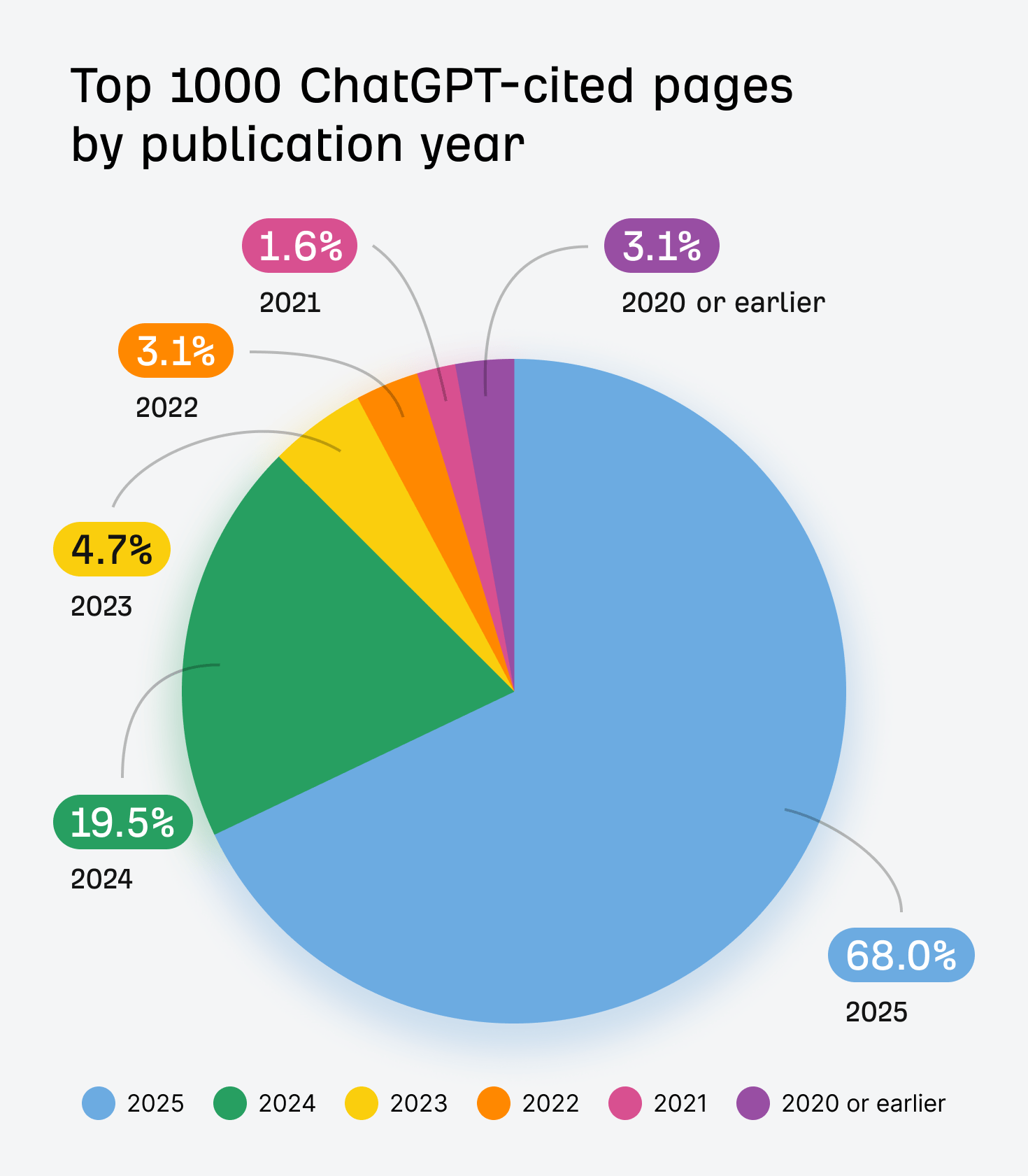
And here’s the breakdown of pages with detectable update dates…
| Updated | % |
|---|---|
| 30 days | 42.7% |
| 1-6 months | 20.0% |
| 6-12 months | 11.9% |
| >1 year | 25.4% |
The data indicates a clear recency bias, consistent with findings from Metehan Yeşilyurt’s recent research.
Yeşilyurt identified a URL_freshness_score in ChatGPT that favors newer content, and cited studies showing that artificially refreshing publication dates can improve AI ranking positions by as much as 95 places.
That said, my data showed nearly one in four cited pages were updated over a year ago—suggesting that useful, well-structured older content can still maintain visibility in AI.
Nearly one-third of ChatGPT’s citations point to pages with no traditional search visibility.
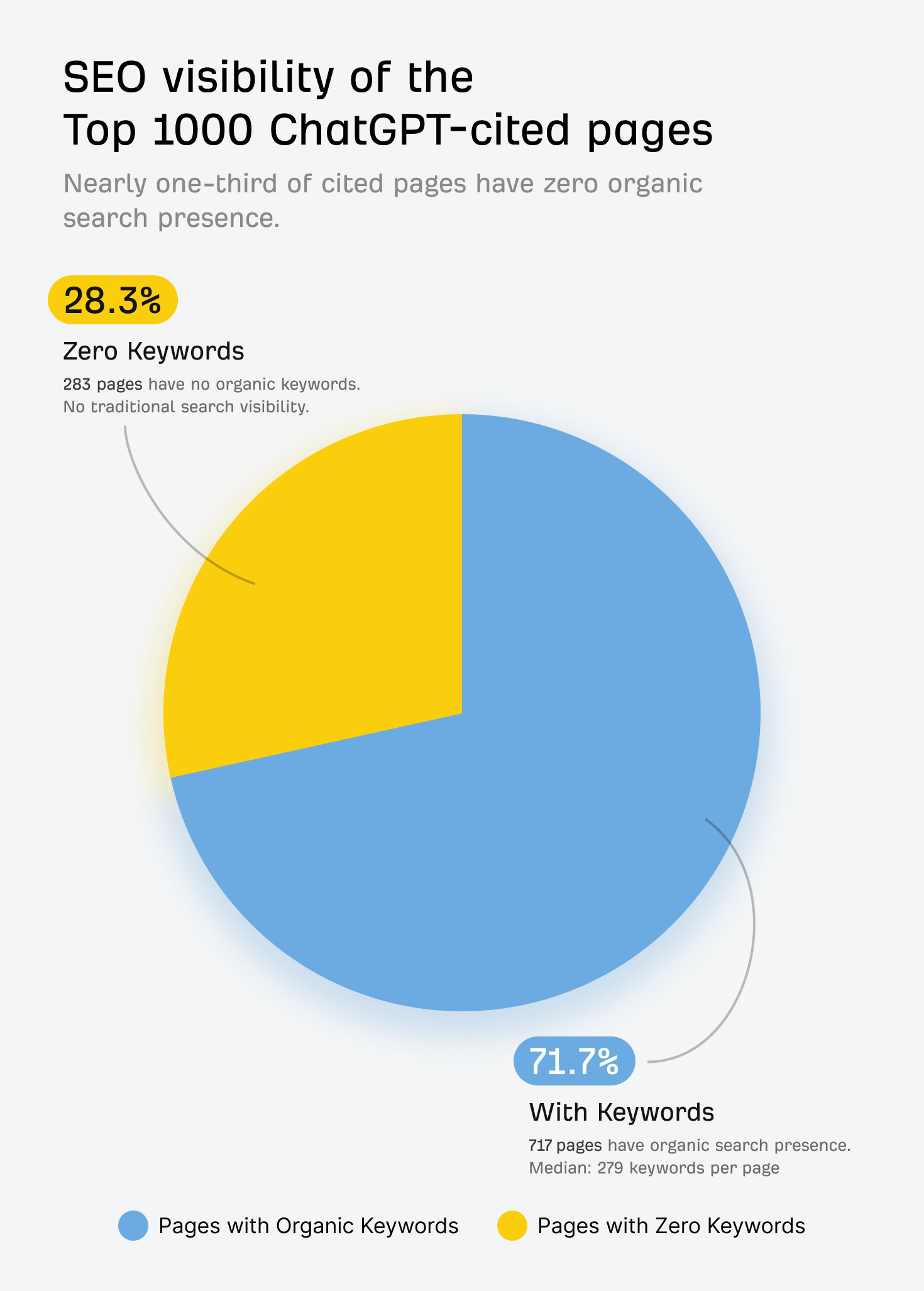
Here are some possible explanations for this:
Freshness: Some zero-keyword pages are potentially fresh content not yet ranked by search engines. ChatGPT may discover and cite new content before it accumulates search rankings.
Niche topics: Citations may cover specific, long-tail topics with minimal search demand. They answer questions accurately but don’t attract significant search traffic. This also applies to fan-out queries—even when someone asks ChatGPT about a popular topic, the conversation often branches into more specific subtopics where few pages directly target those angles.
Different discovery: ChatGPT tends to access and evaluate content differently than search engines, seemingly prioritizing accuracy, freshness, and relevance over popularity signals like backlinks.
The reality is it’s likely a combination of all three. Fresh content, niche topics, and alternative quality signals all contribute.
The pages that do rank display some interesting patterns. Here are the key takeaways:
- Site authority really matters: 65.3% are DR 81+, median DR 90
- But page authority doesn’t: 67.3% have UR 0-10 and a median UR only 6. ChatGPT cites pages from authoritative domains, but not necessarily the most linked-to pages on those domains.
- Pages are keyword-rich: Median 279 keywords
- Most have strong backlink profiles: Median 70 referring domains
- Half have high search visibility: 52.1% rank in top 3 for keywords
- Low-authority exceptions exist: 11.7% have DR 0-20
ChatGPT heavily favors pages from high-authority domains that have strong backlink profiles and rank well in search, but will cite low-authority sources for specific relevant content.
Wrapping up
ChatGPT’s top citations skew toward newer content, include almost a third of pages with no organic visibility, and are dominated by reference sites you can’t easily influence.
The data suggests your best bet for ChatGPT visibility is getting mentioned in fresh, specific content that falls into those influenceable categories.
To find outreach opportunities, you can use Brand Radar. Just drop in your market or niche, head to the cited pages report and look out for the top blogs, publications, and review sites.
